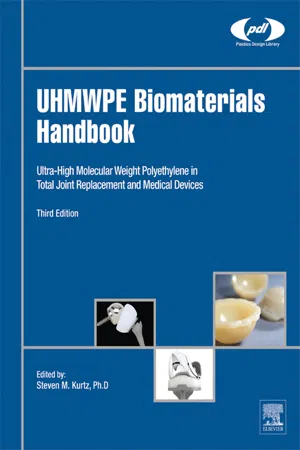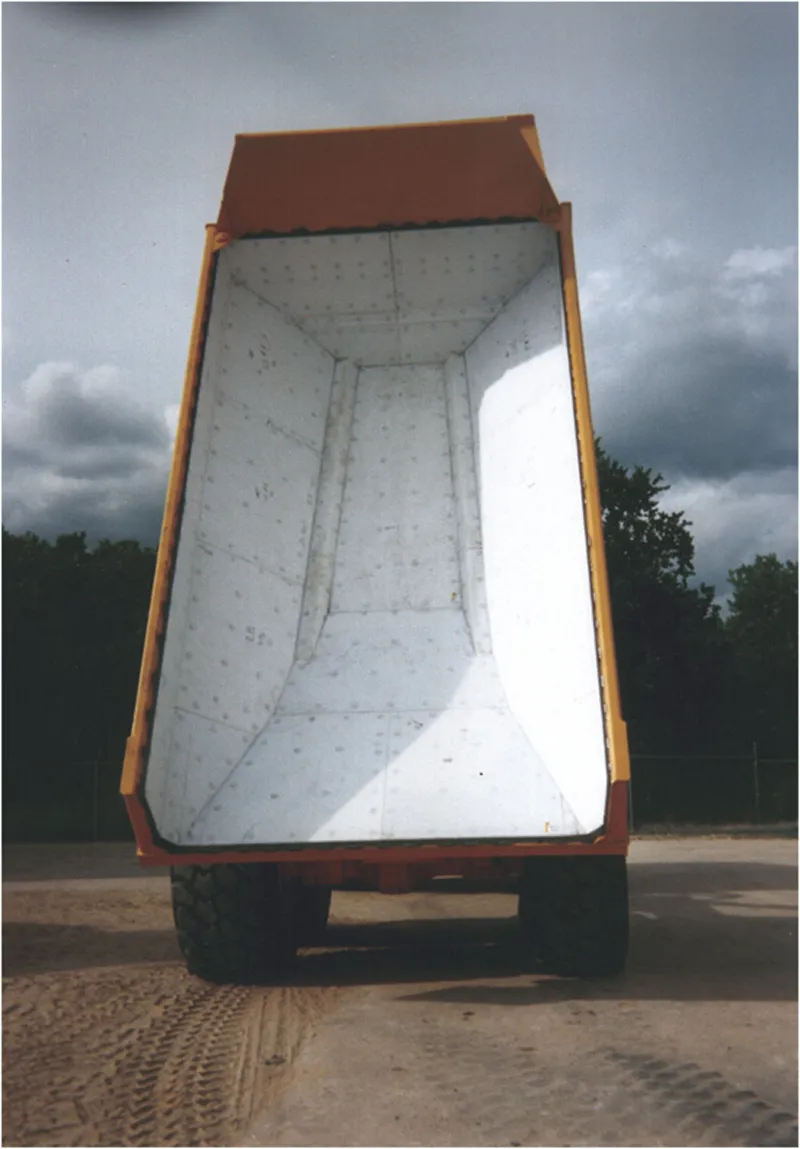
UHMWPE Biomaterials Handbook
Ultra High Molecular Weight Polyethylene in Total Joint Replacement and Medical Devices
Steven M. Kurtz
- 840 pages
- English
- ePUB (adapté aux mobiles)
- Disponible sur iOS et Android
UHMWPE Biomaterials Handbook
Ultra High Molecular Weight Polyethylene in Total Joint Replacement and Medical Devices
Steven M. Kurtz
À propos de ce livre
UHMWPE Biomaterials Handbook, Third Edition, describes the science, development, properties, and application of ultra-high molecular weight polyethylene (UHMWPE) used in artificial joints. UHMWPE is now the material of choice for joint replacements, and is increasingly being used in fibers for sutures. This book is a one-stop reference for information on this advanced material, covering both introductory topics and the most advanced developments.
The third edition adds six new chapters on a range of topics, including the latest in anti-oxidant technologies for stabilizing HXLPE and up-to-date systematic reviews of the clinical literature for HXLPE in hips and knees. The book chronicles the rise and fall of all-metal hip implants, as well as the increased use of ceramic biomaterials and UHMWPE for this application. This book also brings orthopedic researchers and practitioners up to date on the stabilization of UHMWPE with antioxidants, as well as the choices of antioxidant available for practitioners.
The book also thoroughly assesses the clinical performance of HXLPE, as well as alternative bearings in knee replacement and UHMWPE articulations with polyether ether ketone (PEEK).
Written and edited by the top experts in the field of UHMWPE, this is the only state-of-the-art reference for professionals, researchers, and clinicians working with this material.
- The only complete reference for professionals, researchers, and clinicians working with ultra-high molecular weight polyethylene biomaterials technologies for joint replacement and implants
- New edition includes six new chapters on a wide range of topics, including the clinical performance of highly crosslinked polyethylene (HXLPE) in hip and knee replacement, an overview of antioxidant stabilization for UHMWPE, and the medical applications of UHMWPE fibers
- State-of-the-art coverage of the latest UHMWPE technology, orthopedic applications, biomaterial characterization, and engineering aspects from recognized leaders in the field
Foire aux questions
Informations
A Primer on UHMWPE
Abstract
Keywords
1.1. Introduction

1.2. What is a Polymer?
Table des matières
- Cover
- Title page
- Table of Contents
- Copyright
- Dedication
- List of Contributors
- Foreword
- 1: A Primer on UHMWPE
- 2: From Ethylene Gas to UHMWPE Component: The Process of Producing Orthopedic Implants
- 3: Packaging and Sterilization of UHMWPE
- 4: The Origins of UHMWPE in Total Hip Arthroplasty
- 5: The Clinical Performance of Historical and Conventional UHMWPE in Hip Replacements
- 6: The Clinical Performance of Highly Cross-linked UHMWPE in Hip Replacements
- 7: Contemporary Total Hip Arthroplasty: Alternative Bearings
- 8: The Origins and Adaptations of UHMWPE for Knee Replacements
- 9: The Clinical Performance of UHMWPE in Knee Replacements
- 10: Contemporary Total Knee Arthroplasty: Alternative Bearings
- 11: The Clinical Performance of UHMWPE in Shoulder Replacements
- 12: The Clinical Performance of UHMWPE in Elbow Replacements
- 13: Applications of UHMWPE in Total Ankle Replacements
- 14: The Clinical Performance of UHMWPE in the Spine
- 15: Highly Cross-Linked and Melted UHMWPE
- 16: Highly Cross-Linked and Annealed UHMWPE
- 17: Vitamin E-Blended UHMWPE Biomaterials
- 18: Highly Cross-Linked UHMWPE Doped with Vitamin E
- 19: Alternate Antioxidants for Orthopedic Devices
- 20: Phospholipid Polymer Grafted Highly Cross-Linked UHMWPE
- 21: UHMWPE Matrix Composites
- 22: UHMWPE Homocomposites and Fibers
- 23: UHMWPE–Hyaluronan Microcomposite Biomaterials
- 24: High Pressure Crystallized UHMWPEs
- 25: Compendium of HXLPEs
- 26: Mechanisms of Cross-Linking, Oxidative Degradation, and Stabilization of UHMWPE
- 27: In Vivo Oxidation of UHMWPE
- 28: Pathophysiologic Reactions to UHMWPE Wear Particles
- 29: Characterization of Physical, Chemical, and Mechanical Properties of UHMWPE
- 30: Wear Assessment of UHMWPE with Pin-on-Disc Testing
- 31: Tribology of UHMWPE in the Hip
- 32: Tribological Assessment of UHMWPE in the Knee
- 33: Characterization of UHMWPE Wear Particles
- 34: Clinical Surveillance of UHMWPE Using Radiographic Methods
- 35: ESR Insights into Macroradicals in UHMWPE
- 36: Fatigue and Fracture of UHMWPE
- 37: Development and Application of the Notched Tensile Test to UHMWPE
- 38: Development and Application of the Small Punch Test to UHMWPE
- 39: Computer Modeling and Simulation of UHMWPE
- 40: Nano- and Microindentation Testing of UHMWPE
- 41: MicroCT Analysis of Wear and Damage in UHMWPE
- Subject Index